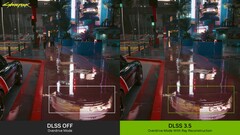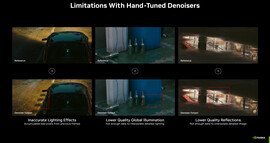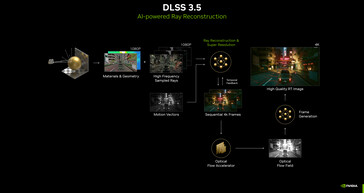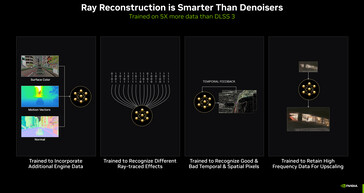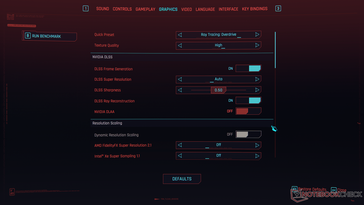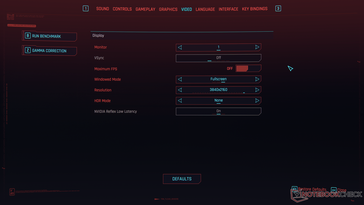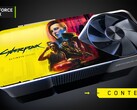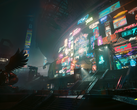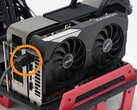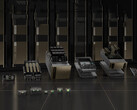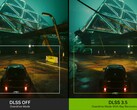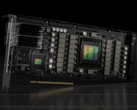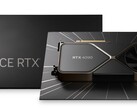Nvidia introduced DLSS 3.5 last month that brings new ray reconstruction abilities in supported games for all RTX GPUs. Ray reconstruction builds upon the original DLSS 3 implementation by creating higher quality ray traced images using a neural network.
Games with support for DLSS 3.5 will be launching in the coming weeks. We had a chance to test drive the new Cyberpunk 2077 Update 2 that offers native support for DLSS 3.5, and Night City has never looked better before!
Nvidia's Bryan Catanzaro elucidates what DLSS 3.5 ray reconstruction and how it can improve in-game lighting and reflections in the video below.
Briefly, the GPU uses de-noising algorithms to clean up a ray traced output. Currently, Nvidia cards use the Nvidia Real-time Denoiser (NRD), which is about 50% faster than the previous Spatiotemporal Variance-Guided Filtering (SVGF) method. NRD has the ability to work on as low as 0.5 or 1 ray per pixel.
However, it's a development and processing challenge to have light information for every pixel in a scene. Hand-tuned denoisers such as NRD have to approximate light from nearby pixels resulting in undesired effects such as ghosting, reduced image quality after upscaling, and performance loss.
With ray reconstruction, instead of relying on hand-tuned denoisers, AI smarts are used to assess temporal and spatial data to recreate how light would behave in a scene. Nvidia claims that DLSS 3.5 is trained with 5x more data than previous DLSS versions, using high-quality offline rendered images.
Cyberpunk 2077 Update 2 with DLSS 3.5
We played the new Cyberpunk 2077 Update 2 on an Intel Core i9-13900K-powered test bench that also features 2x 16 GB Kingston Fury Renegade DDR5-6400 RAM, a Sabrent 2 TB Rocket 4 Plus Gen4 NVMe SSD, an Aorus GeForce RTX 4080 16 GB Master GPU (Game Ready Driver 537.34), and a Gigabyte M28U 4K 144 Hz monitor.
We will be looking into detailed performance and benchmark comparisons of Update 2 and the Phantom Liberty expansion in the coming days. For now, we focus only on in-game lighting changes brought about by ray reconstruction with the DLSS 3.5 update.
The game was run in the Ray Tracing: Overdrive setting with High texture quality at native 4K resolution and an uncapped frame rate. Ray tracing: Overdrive mode also toggles Path tracing — ray reconstruction currently works best with the highest ray tracing settings.
Enabling DLSS ray reconstruction automatically turns off DLAA anti-aliasing. This is a known issue, and Nvidia said that they are looking to train DLSS 3.5 to work with Ultra Performance and DLAA enabled in the future.
DLSS Frame Generation was enabled, and the Super Resolution setting was set to Auto. Motion blur and Film grain were disabled. Intel's new PresentMon Beta was used to assess performance metrics.
DLSS 3.5 ray reconstruction results in a more natural-looking lighting
The images below are downsampled to 1080p from 4K. The left part of the comparison is with ray reconstruction (RR) off while the right is with reconstruction on. No other settings were modified.
Let's start with a relatively simple light source. In this scene, the taillight of the car with RR off shows a diffuse pattern spread over a larger area for the given light intensity than is likely in real life. With RR on, we see a more natural looking incidence of the taillight on the ground wherein the light merely doesn't fall over a large surface area.
The effect of RR is also seen in background objects. For instance, the lighting in the shelter ahead of the car is better defined compared to when RR is off.
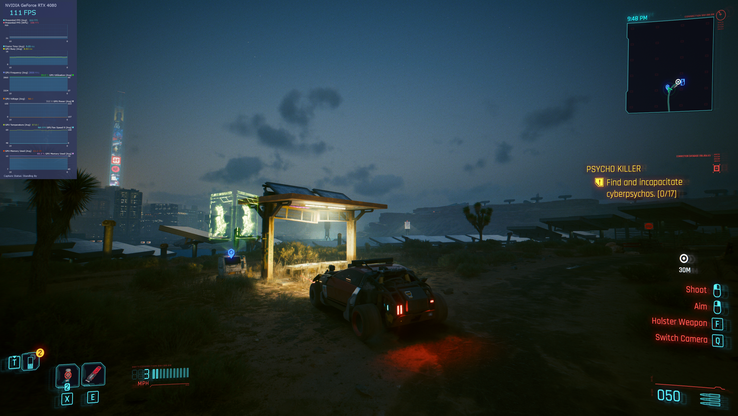
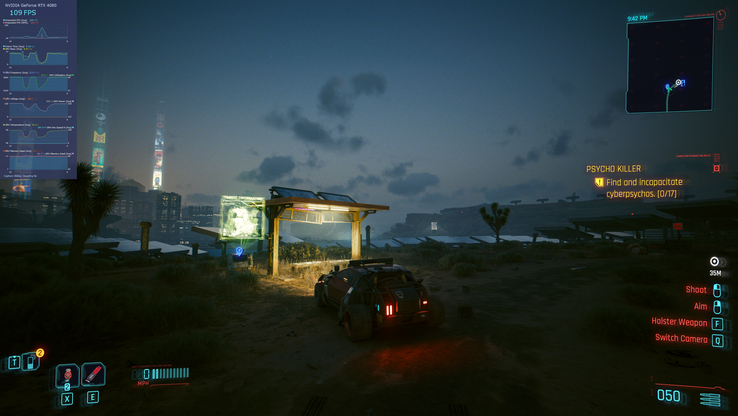
The effect of RR in the next scene is subtle but is still noticeable. The "Brooklyn Barista" signage and its reflection in the water on the street has better definition and clarity with RR on compared to off.
Some of the lighting towards the left of the image is also better resolved with RR on, instead of just being rendered as blobs of light.
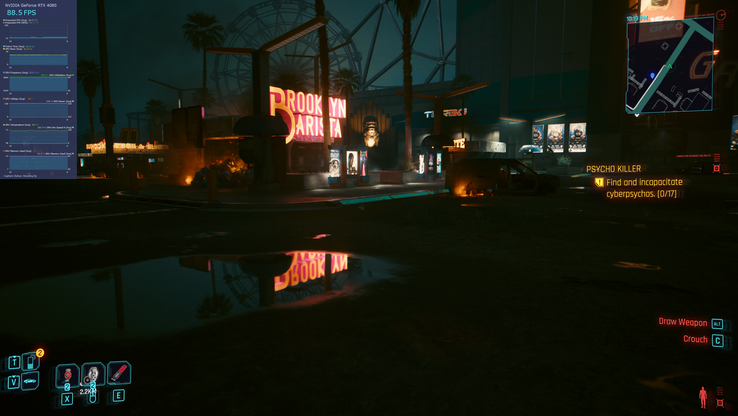
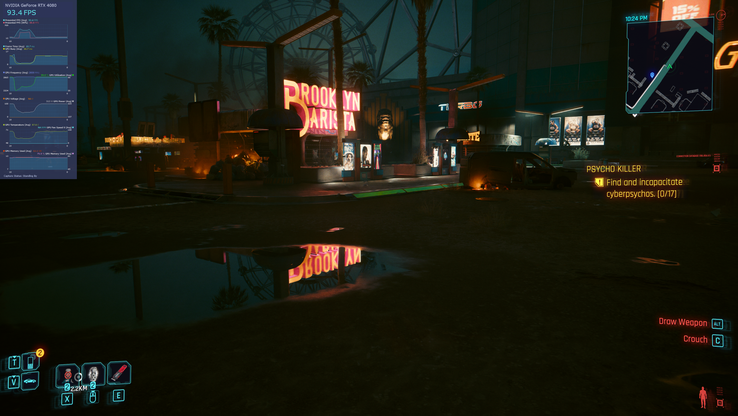
Ray reconstruction also seems to help with reducing fringing artefacts. In the below scene, fringing artefacts are visible near the top center of the image. Turning on RR virtually eliminates such artefacts resulting in a much cleaner image.
However, this scene also exposes the limitation of the current DLSS 3.5 RR implementation. RR doesn't seem to fix the vertical diffusion of the car's yellow headlamp, which seems a bit unnatural given that the car with the white headlamp looks much better.
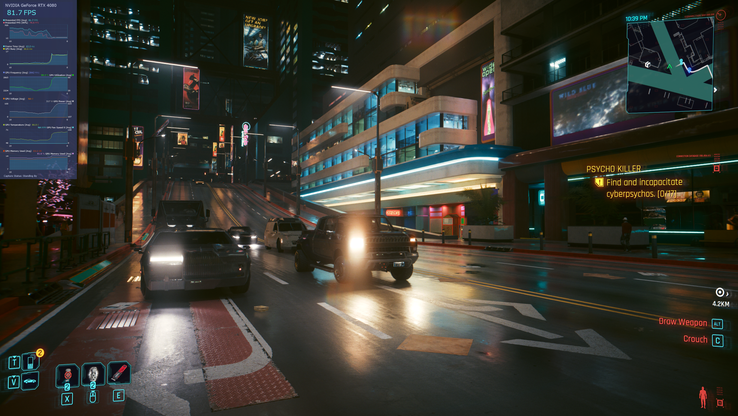
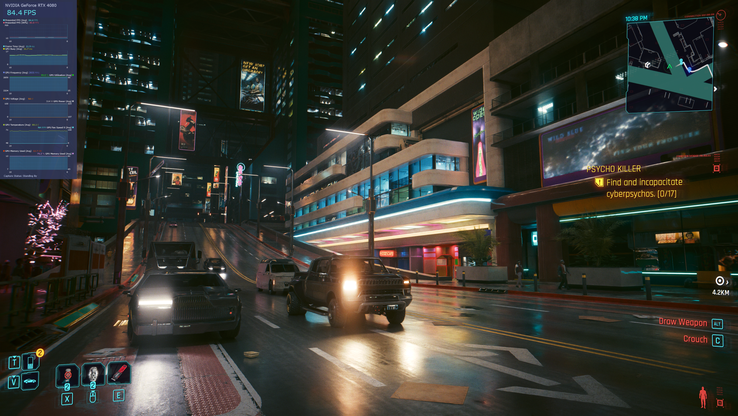
We observed that enabling DLSS 3.5 ray reconstruction shows perceivable improvements in the game's built-in benchmark as seen in the video below made using Nvidia's Image Comparison Analysis Tool (ICAT).
With RR enabled, we see better ambient occlusion, more clarity in reflections, sharper smoke effects, and reduced wanton diffusion from light sources.
Note: The videos below were captured at 4K 60 fps with a 50 Mbps bitrate using GeForce Experience's ShadowPlay with RR off (left) and RR on (right). They have been downsampled to 1080p 60 fps 7 Mbps to help with loading times. You can use the embedded ICAT tool to seek or pause the video, adjust scaling and playback speed, and use split-screen or side-by-side comparisons.
DLSS 3.5 performance impact and initial impressions
While DLSS 3 frame generation understandably requires an RTX 40 series Ada Lovelace GPU, DLSS 3.5 ray reconstruction is more forgiving in that it is backwards compatible all the way back to Turing cards.
DLSS 3.5 isn't a subset of other DLSS features, though it works best with frame generation enabled. In fact, Cyberpunk 2077 Update 2 ships with three DLSS DLLs, all of which are of different versions. The core DLSS super resolution library is of version 3.1.1.0 while the frame generation file is of version 3.1.13.0. The ray reconstruction feature naturally uses 3.5.0.0 bits.
It is not clear why CD Projekt Red hasn't shipped the latest DLSS libraries with Update 2. A possible explanation could be that the developers simply didn't feel the need to, or that the new Phantom Liberty expansion has been validated on the older file versions.
Theoretically, DLSS 3.5 RR should have negligible impact on frame rates, but we do see a slight frame rate increase with RR on.
One interesting aspect about RR is that it seems to go a bit easy on the VRAM. As seen in our screen grabs above, expect to save anywhere between 400 MB to 700 MB of frame buffer depending on the scene.
Nvidia and CDPR have curated certain areas of the game where RR effects are seen best, though we have chosen random map locations to see how RR pans across the game. And as detailed above, not all areas and lighting conditions show perceivable differences.
While there are definite positives to DLSS 3.5 ray reconstruction, these currently come with a BIG caveat. Ray reconstruction, in its current state for Cyberpunk 2077, is best experienced only with the RT Overdrive setting with Path tracing enabled.
The mere mention of RT Overdrive and Path tracing in the same breath can bring cards below the RTX 4090 and RTX 4080 to their knees — and even these GPUs require frame generation enabled for playable frame rates.
That means a vast majority of gamers with lower-end GPUs will find little benefit in being early adopters of this technology. Nvidia clearly has its task cut out to further train the RR model to be effective with other quality presets and demanding titles.




